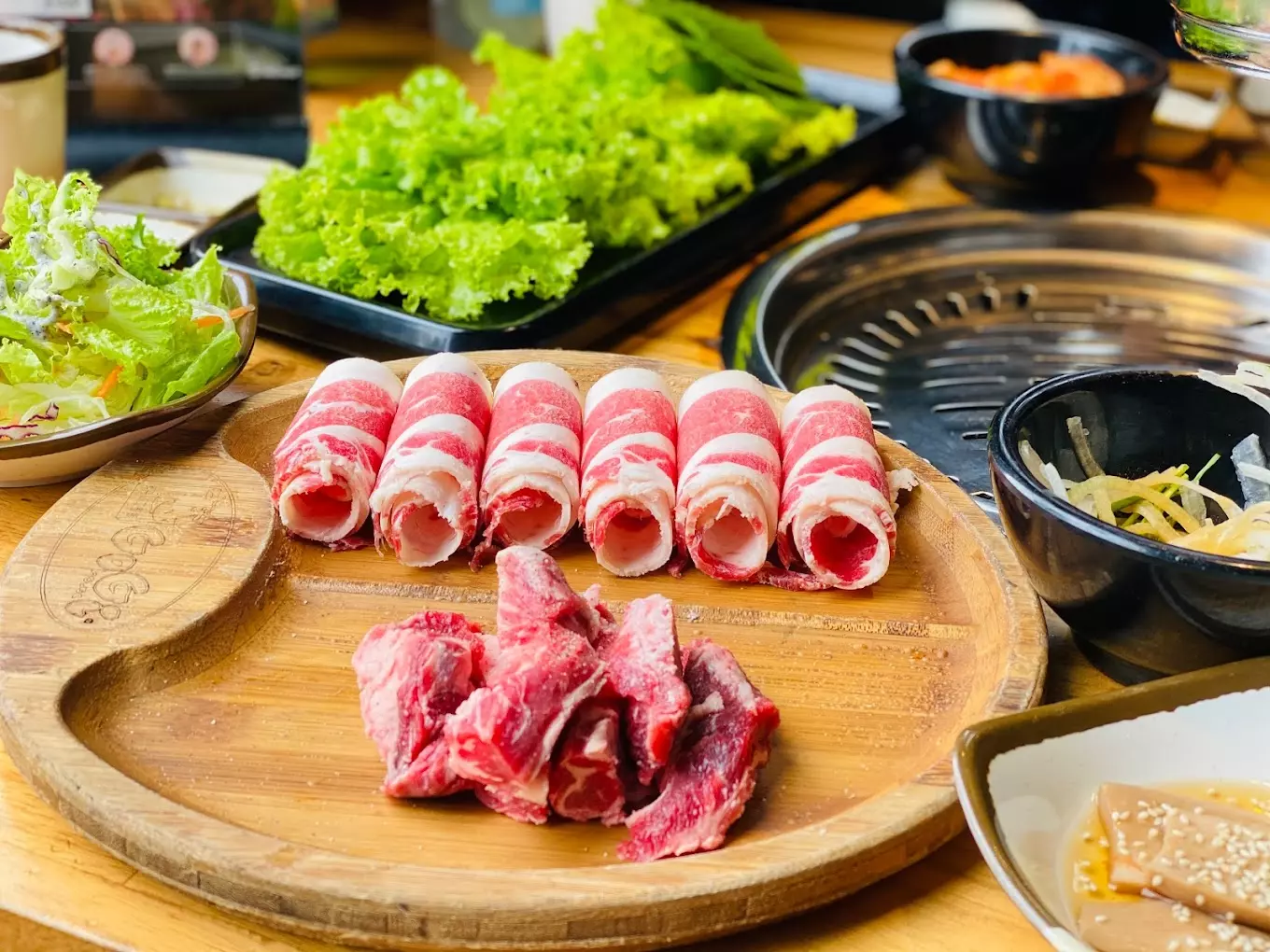Here are 8 famous and long-standing traditional craft villages in the ancient land of Hanoi that you should visit at least once during your explorations. These will surely be ideal suggestions for anyone looking to learn about and understand the culture of Hanoi.
Table of Contents
Bat Trang Pottery Village – Famous Traditional Craft Village in Hanoi
- Address: Bat Trang Commune, Gia Lam District, Hanoi.
Nestled by the poetic Red River, Bat Trang Pottery Village in Gia Lam District, on the outskirts of Hanoi, has existed and developed for over 500 years. Known as the “cradle” of Vietnamese ceramics, this place is renowned for its exquisite products that carry historical and cultural imprints.
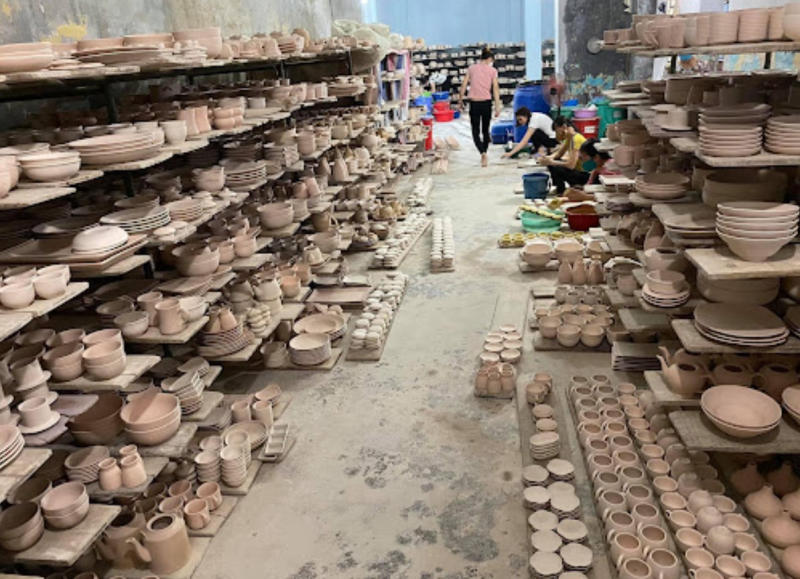
When you visit Hanoi and stop by Bat Trang, you will be immersed in the bustling atmosphere of spinning wheels molding clay. Skilled artisans use their dexterous hands to shape lifeless clay, breathing soul into each product. Stepping into the pottery workshops, you will witness the complete production process, from selecting materials to shaping and decorating.
The village’s products are incredibly diverse, ranging from household items like bowls, plates, and teapots to intricate decorative items such as vases, statues, and ceramic paintings. Each product features unique traditional patterns like lotus flowers, cranes, and dragons, symbolizing prosperity and wealth.
Chuong Conical Hat Village
- Address: Phuong Trung Commune, Thanh Oai District, Hanoi.
Chuong Village, also known as Thanh Oai Conical Hat Village, is located in Phương Trung Commune, Thanh Oai District, Hanoi. This village, with over 300 years of history, is famous for its delicate and graceful conical hats that adorn the charming beauty of Vietnamese women.
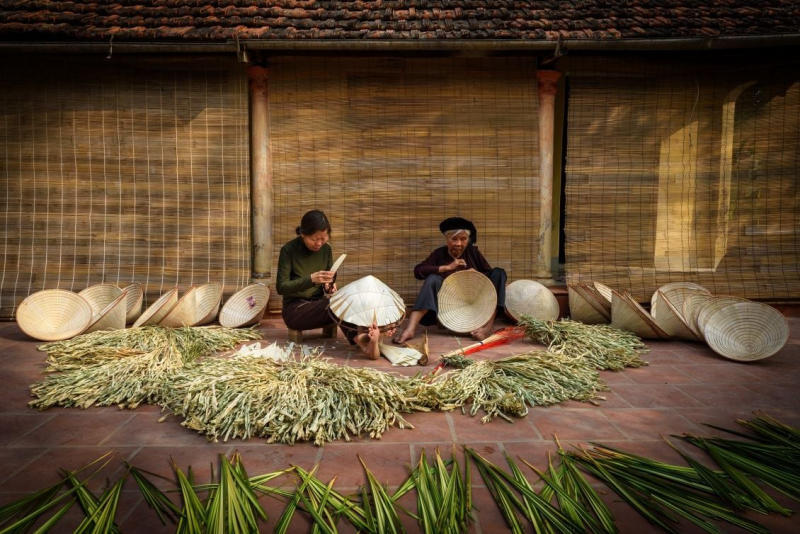
Exploring this traditional craft village with VnCarRentals.com, you will feel like you’ve entered a world of conical hats. Every house seems like a miniature workshop, filled with the gentle tapping sounds of frame-making tools. The air is fragrant with the scent of nipa leaves and bamboo strips, creating an unforgettable characteristic.
Van Phuc Silk Village
- Address: Van Phuc Ward, Ha Dong District, Hanoi.
About 10 kilometers west of Hanoi, Van Phuc Silk Village in Ha Dong District is the next destination in your journey to explore Vietnamese craft villages. With over 1,200 years of history, Van Phuc is famous for its sophisticated silk products that deeply reflect traditional cultural imprints.
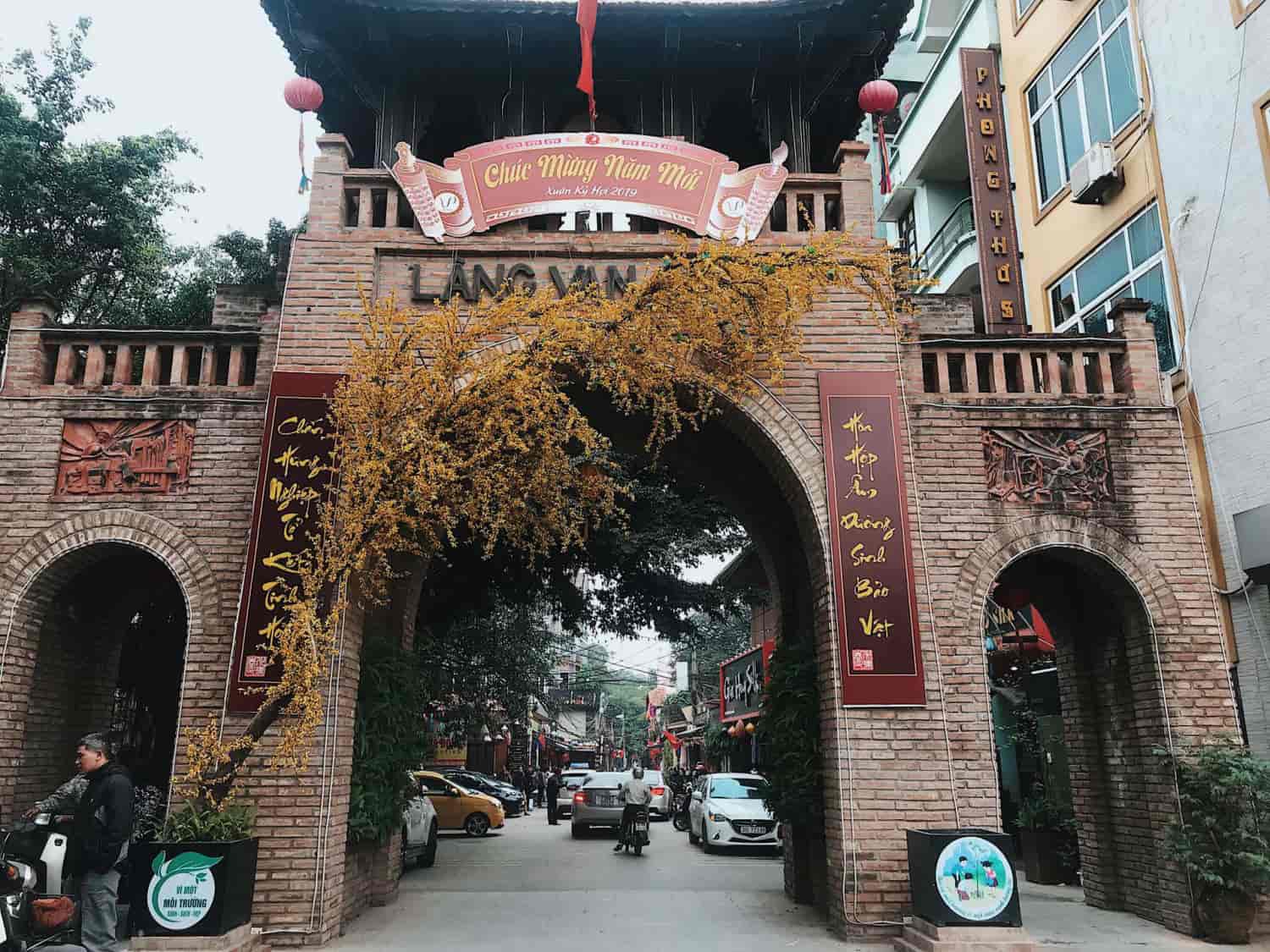
Entering this traditional craft village, you will find yourself in a world of vibrant colors. Shops line the streets, offering a variety of silk products. Each item is the result of meticulous weaving and dyeing, showcasing the creativity and skilled craftsmanship of the artisans.
Vong Green Rice Village
- Address: Vong Village, Dịch Ving Ward, Cau Giay District, Hanoi.
Nestled among the bustling urban areas of modern Hanoi, Vòng Green Rice Village in Dịch Vọng Hậu Ward, Cầu Giấy District, still preserves its simple, peaceful countryside charm. This traditional craft village is famous for cốm (green rice), a delicate autumn treat closely linked to generations of Hanoi residents.
Vòng green rice not only delights with its sweet, nutty flavor but also with its beautiful jade-green color. Each portion of cốm is carefully wrapped in lotus leaves and ráy leaves to maintain its moisture and impart a faint fragrance of the countryside. Vòng Village also produces various types of rice-based cakes, enriching Hanoi’s autumn culinary scene.
Quat Dong Embroidery Village
- Address: Thuong Tin District, Hanoi.
Amid the hustle and bustle of Hanoi, Quất Động Embroidery Village continues to preserve the essence of traditional embroidery. With a history of over 400 years, this craft village is renowned for its intricate and refined embroidery pieces that adorn living spaces and stand as a pride of Vietnamese craftsmanship.
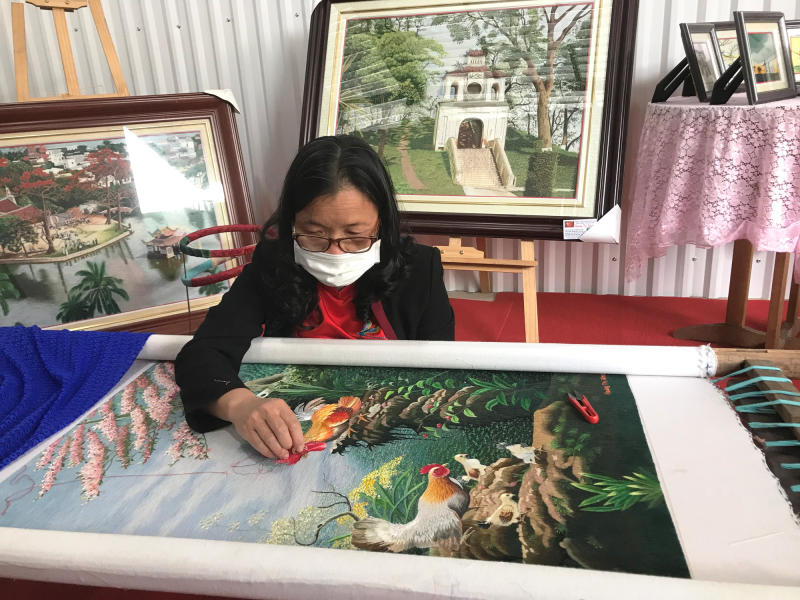
Each house in this village seems like a small workshop. Walking along the streets, you will hear the rhythmic sounds of needles on fabric. The air carries a distinctive scent of embroidery threads, creating an unforgettable atmosphere.
Son Dong Wood Carving Village
- Address: Hoai Duc District, Hanoi.
With over 1,000 years of history, Son Dong is known as the cradle of wood carving, particularly for religious statues and altars. It is said that the first craftsmen in this village were artisans from the Lý dynasty who brought their valuable woodworking secrets to this land and passed them down through generations.
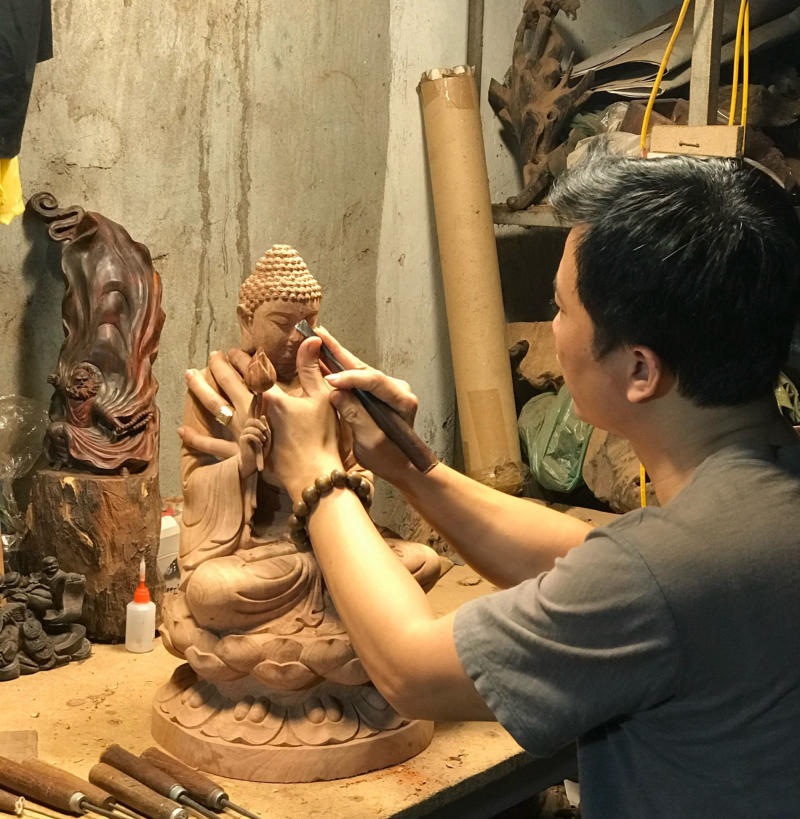
Over the centuries, Son Dong has continually developed, preserving and perfecting traditional carving techniques. Today, the village uses both skilled handcrafting methods and modern tools. This harmonious combination enhances productivity while ensuring the artistic and intricate value of each product.
Nhi Khe Woodturning Village
- Address: Thuong Tin District, Hanoi.
Nhi Khe Village is characterized by the lively sounds of spinning wheels and the rhythmic chiseling of craftsmen. Artisans use their skillful hands and various woodturning tools to shape raw wood, infusing life into each product. The wood is carefully selected to ensure durability and beautiful grain patterns.
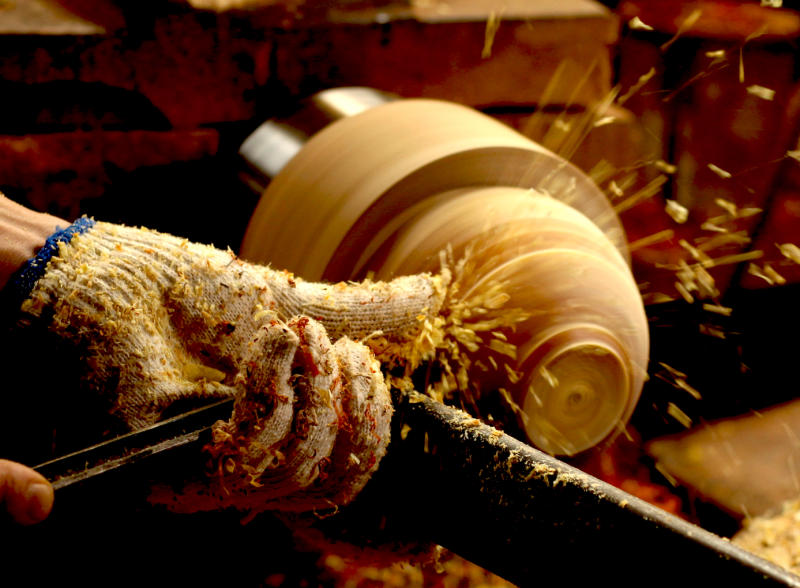
The village’s products range widely from everyday household items like bowls, plates, spoons, and mortars to intricate decorative items such as wooden statues, paintings, and toys. Each product showcases the meticulous and skillful craftsmanship of the artisans.
Chuon Ngo Inlay Village
- Address: Chuyên Mỹ Commune, Phú Xuyên District, Hanoi.
Chuon Ngo Inlay Village is a place where the essence of traditional inlaying art is preserved. Despite being over a thousand years old, this village remains famous for its exquisite inlay products that reflect the artisans’ skill and creativity. To create a finished inlay product, Chuôn Ngọ artisans must go through many meticulous and skillful stages, requiring patience and precision.
The inlay village continues to thrive, spreading its craft to various hamlets in Chuyên Mỹ Commune and other areas. Today, Chuôn Ngọ still retains its valuable trade secrets, harmoniously blending them with modern techniques to create unique inlay products that bear the cultural imprints of the nation.
Traditional craft villages are an indispensable part of Vietnam’s cultural heritage. These villages preserve unique cultural values, showcasing the creativity and craftsmanship of the Vietnamese people over the centuries. Each craft village has its own distinct identity, contributing to the diversity and richness of the national culture. Don’t forget to use the private car rental service with a driver in Hanoi from VnCarRentals.com; with professional driving services and door-to-door pick-up, it will make your trip to Hanoi, Vietnam, as complete as possible.
